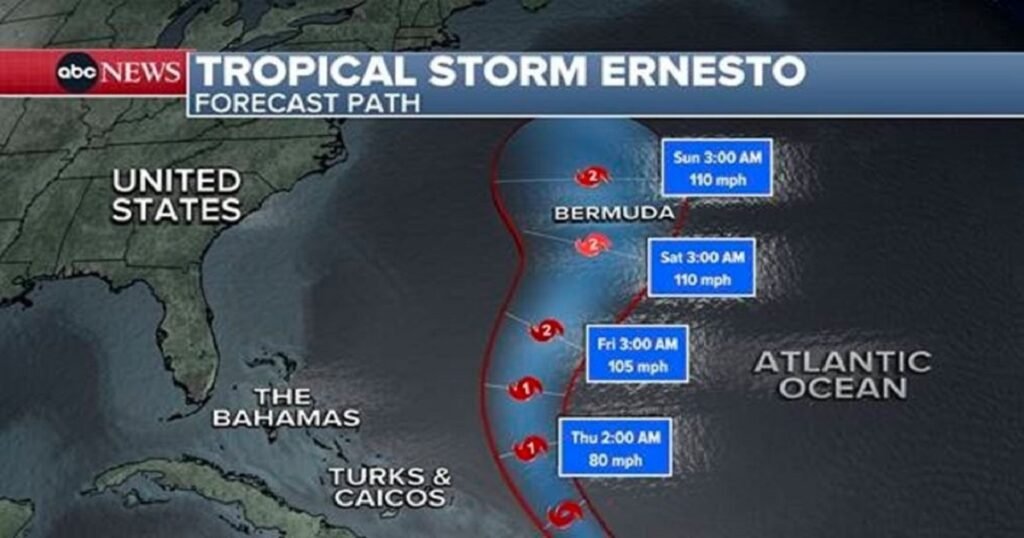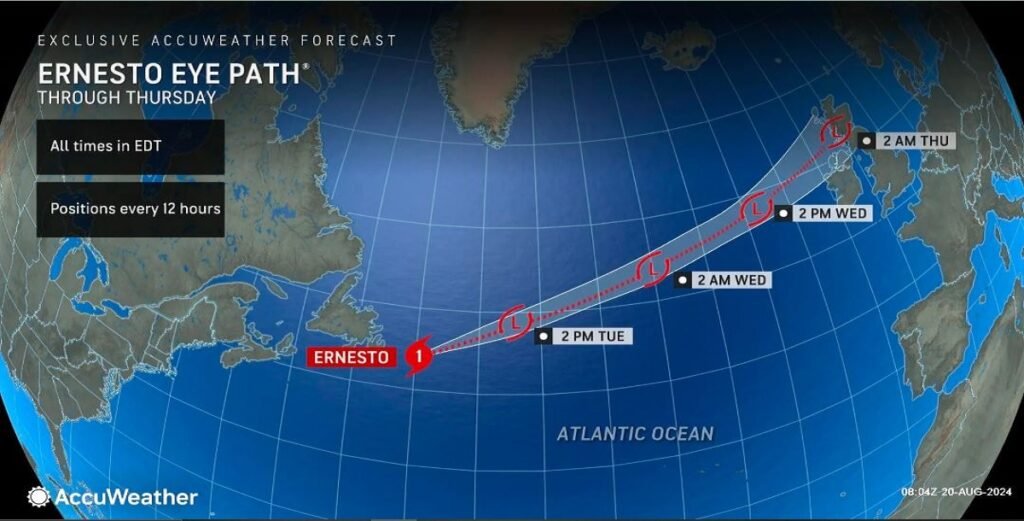Tropical storms and hurricanes are among the most destructive natural phenomena, causing widespread damage and affecting millions of lives every year. One such storm that left its mark was Tropical Storm Debby, which many people mistakenly refer to as the Tropical Storm Debby hurricane. While Debby never officially reached hurricane status, it certainly caused a stir and brought with it the kind of severe weather typically associated with hurricanes. This blog explores the history, impact, and significance of Tropical Storm Debby, as well as the factors that contributed to its development.
The Formation of Tropical Storm Debby
Tropical storms form in areas of low pressure over warm ocean waters, usually between June and November in the Atlantic hurricane season. The warm water acts as fuel, causing the system to gather strength and, under the right conditions, form a tropical cyclone. In the case of Tropical Storm Debby, the storm originated in the Atlantic in early June 2012, making it an early-season storm.
Debby formed from a low-pressure system off the coast of the Yucatan Peninsula in the Gulf of Mexico. Initially, it appeared that the storm might strengthen into a full-blown hurricane, but a combination of environmental factors—such as wind shear and interaction with land—prevented it from ever reaching hurricane strength. This didn’t stop Debby from causing significant issues, however, particularly in Florida and parts of the southeastern United States.
Path and Impact of Tropical Storm Debby
While Tropical Storm Debby hurricane never materialized, the storm took an unusual path and had widespread effects. Most tropical storms that form in the Gulf of Mexico tend to move westward or northward toward the United States Gulf Coast, but Debby moved eastward, affecting Florida most directly. The storm’s erratic movement was influenced by a combination of weak steering currents and interaction with weather patterns in the Atlantic.
Florida bore the brunt of the storm, experiencing heavy rainfall, flooding, and even tornadoes. Central and northern parts of the state saw some areas receiving over 20 inches of rain, leading to flash floods that disrupted communities and caused severe property damage. Many areas experienced widespread power outages, downed trees, and damaged infrastructure. Even though Debby was not a hurricane, it proved that tropical storms can be just as dangerous, particularly when they linger over populated areas for extended periods.
Was Debby a Hurricane?
One of the most common questions surrounding Tropical Storm Debby is why it is sometimes referred to as the Tropical Storm Debby hurricane. Despite causing significant damage, Debby never officially reached hurricane status. For a tropical storm to be classified as a hurricane, its sustained winds must reach at least 74 miles per hour (119 kilometers per hour). Debby’s maximum sustained winds only reached about 60 mph, falling short of the criteria for a hurricane.
While it wasn’t technically a hurricane, Debby’s long-lasting nature and the amount of rain it produced made it particularly hazardous. The storm lingered over Florida for several days, allowing its rainbands to continuously dump water over already saturated areas. In some ways, this made Debby just as dangerous as a hurricane, since flooding is often the most deadly aspect of tropical cyclones, regardless of wind strength.
Tropical Storm Debby’s Legacy
Although Tropical Storm Debby hurricane was not a Category 1 or higher storm, its impact was lasting. In Florida, the storm caused significant flooding, forcing people to evacuate their homes and businesses. In the aftermath, communities faced extensive recovery efforts, with millions of dollars spent on rebuilding efforts.
Tropical Storm Debby also contributed to an important conversation about the dangers of underestimating tropical storms. Often, the focus is on hurricanes due to their higher wind speeds, but Debby demonstrated that tropical storms can still cause widespread damage through flooding, heavy rainfall, and even tornado activity. Emergency preparedness agencies in Florida and other parts of the southeastern U.S. emphasized the importance of taking tropical storm warnings seriously, even if the storm doesn’t reach hurricane strength.
Debby served as a reminder of the unpredictable nature of tropical systems and the need for communities in hurricane-prone areas to be vigilant throughout the storm season. Its erratic path and extended stay over Florida highlighted the need for accurate forecasting and timely evacuations, especially in vulnerable, low-lying areas prone to flooding.
Lessons Learned from Tropical Storm Debby
The experience of Tropical Storm Debby brought several lessons for meteorologists, emergency management agencies, and the general public. One of the key takeaways was the importance of proper forecasting. Debby’s unpredictable path caught many by surprise, and the extended rainfall overwhelmed local infrastructure in several parts of Florida. Emergency management systems have since worked to improve predictive models and ensure that communities are better prepared for tropical storms, even when they don’t become hurricanes.
Another important lesson was the need for ongoing public education. Many people view tropical storms as less threatening than hurricanes, but Debby’s widespread flooding and tornadoes proved otherwise. Educational campaigns now focus on raising awareness about the full spectrum of dangers posed by tropical cyclones, including storm surges, flooding, and wind damage.
How Meteorologists Track and Predict Storms Like Debby
Modern technology plays a crucial role in predicting and tracking tropical storms like Tropical Storm Debby hurricane. Satellite imagery, weather balloons, and radar systems help meteorologists monitor developing storm systems and predict their likely paths. Predictive models use a range of factors, including ocean temperature, wind patterns, and atmospheric pressure, to anticipate a storm’s trajectory and intensity.
However, tropical storms can still be difficult to predict with absolute certainty. In Debby’s case, conflicting weather patterns and weak steering currents resulted in an unpredictable and erratic path. Despite these challenges, meteorologists continue to refine their models, providing earlier and more accurate warnings to those in the storm’s path.

Conclusion
While Tropical Storm Debby never became a full-fledged hurricane, its impact was profound. The storm’s erratic path, prolonged rainfall, and the significant flooding it caused in Florida demonstrated the importance of taking tropical storm warnings seriously. Even storms that don’t reach hurricane status can cause extensive damage, especially when they linger over populated areas for several days.
Debby’s legacy serves as a reminder of the unpredictable and dangerous nature of tropical storms. It also highlights the need for improved forecasting, public education, and emergency preparedness to better protect communities in storm-prone regions.
FAQs
No, Tropical Storm Debby never reached hurricane status. Its maximum sustained winds were about 60 mph, which is below the 74 mph threshold required for a storm to be classified as a hurricane. However, the storm still caused significant damage, particularly due to flooding.
Florida was most affected by Tropical Storm Debby hurricane. Central and northern parts of the state experienced heavy rainfall, flooding, and tornadoes, causing extensive property damage and power outages.
Although Debby never became a hurricane, some people mistakenly refer to it as the Tropical Storm Debby hurricane because of the severity of its impact. The storm caused significant flooding, which is often associated with hurricanes, leading to some confusion.
Debby taught important lessons about the dangers of underestimating tropical storms. While hurricanes often receive more attention, tropical storms like Debby can cause widespread damage, particularly through flooding and prolonged rainfall.
Meteorologists use satellite imagery, weather balloons, radar, and predictive models to track and forecast tropical storms. While these tools have improved storm prediction, tropical systems like Tropical Storm Debby hurricane can still be challenging to predict due to changing weather patterns and environmental factors.
